- europages
- >
- COMPANIES - SUPPLIERS - SERVICE PROVIDERS
- >
- proximity sensor
Results for
Proximity sensor - Import export

EGE-ELEKTRONIK SPEZIAL-SENSOREN GMBH
Germany
Inductive sensors with factor 1 switching distance for all metals with the same switching distance without reduction factor. Proximity sensors are based on the proven inductive principle - switches con tactless when metallic objects come close due to the inductive dampening of a resonant circuit. Factor 1 sensors are used where different metals from steel to aluminium should be detected. They are, for example, used for the occupation control of presses, where different metals are used all the time.
Request for a quote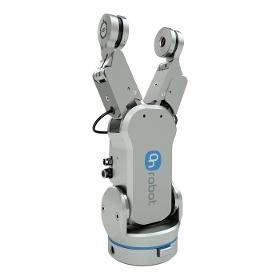
SAMSYS GMBH
Germany
The Intelligent Robot gripper RG2-FT is a modern gripper with additional sense of touch and intelligence. It has an integrated force/torque and proximity sensor for extremely precise automation. This enables real collaboration with human users and supports them like a helping hand. Insertion is faster and more precise. For example, this gripper can easily insert pins, which would be difficult for humans. Due to the advanced sensor technology, the gripper allows the robot to feel during assembly when a part is correctly assembled. The RG2-FT Robot gripper offers high productivity and rapid deployment, saving technicians many hours of man-hours during integration. It´s the world’s first robot gripper with integrated force/torque and proximity sensors that can see and feel objects to ensure extremely safe handling
Request for a quote
MICRO-EPSILON
Germany
mainSENSOR is based on an innovative measuring principle, which has been developed by Micro-Epsilon in order to combine the advantages of both inductive and magnetic sensors. Magneto-inductive sensors are frequently used as alternative to inductive sensors and proximity sensors in process automation, the packaging industry and in machine monitoring. Measuring the distance to a magnet which is fixed at the measurement object, the sensor outputs a continuous, linear signal. As different strength magnets are applied, measuring ranges of between 20 mm and 55 mm can be achieved. However, in order to adapt the measuring range, it is only necessary to change the magnet.
Request for a quote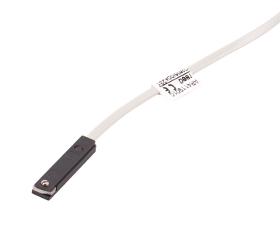
CIC - KLAUS CZERWONKA
Germany
Sensors and proximity switches for pneumatic cylinders according to ISO 6432 and ISO 15552.
Request for a quote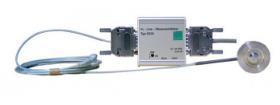
BURSTER PRÄZISIONSMESSTECHNIK GMBH & CO KG
Germany
In practice the requirement often arises to convert the measurement signals of a sensor into a standard signal in the simplest possible manner in the immediate proximity of the sensor. This permits trouble-free, low-loss transmission of measured values over longer distances to an instrument board or plant controls. Ideally suited for this purpose is the in-line measuring amplifier, which is inserted in between in the connection cable by means of plug contacts. Owing to its compact, robust design and low weight, it finds use in almost any application. Even movable locations subject to forces of acceleration, for example manipulators, present no problems. It is intended mainly for use of control cabinets in just about any location and is matched to a specific sensor. The aluminium housing is extremely sturdy and affords the greatest possible protection even in harsh environments.
Request for a quote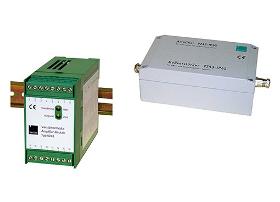
BURSTER PRÄZISIONSMESSTECHNIK GMBH & CO KG
Germany
The amplifier module model 9243 is used wherever measurement signals from strain gauges, potentiometric sensors or DC/DC sensors have to be converted into standard signals. Simply by mounting on conventional DIN-mount rails, it is possible to position the amplifier module on location, in the proximity of the sensor. Especially for rough environments a IP65 version is available. The broad auxiliary power range and the choice between AC or DC permits operation on standard power supplies used in switch gear cabinets. A highly precise reference voltage source is built-in for calibration purposes. A calibrating shunt can also be connected via two separate terminals. This permits deliberate detuning of a strain gauge sensor for calibration or merely to check the measuring chain.
Request for a quote
ETH MESSTECHNIK GMBH
Germany
Customized Solution The mobile testing device may be mounted directly on the wheel nuts on any wheel on the car. The height and tilt adjustment allows optimal orientation at the wheel. Additionally, it is still supported by three proximity sensors. The evaluation and control of the testing device accepts a laptop. For easy transport, the device can be disassembled in a few steps. Curve recording and analysis via notebook. The complete unit is height adjustable via a scissors system. This can also be adapted to different shaft height.
Request for a quote
EGE-ELEKTRONIK SPEZIAL-SENSOREN GMBH
Germany
In addition to purely switching sensors, your sensor specialist EGE also offers you inductive proximity switches with analogue output for measuring tasks. The analogue signal is proportional to the approximation of the metal part. This sensor is also available in a version up to 160° C. The proximity sensor is based on the proven inductive principle: When metallic objects come close, the resonant circuit of a coil is dampened through induction and an analogue signal generated from it. Analogue inductive are e.g. suitable for the double occupation control of metal plates, for the tensioning control of wire or for monitoring metallic brake pads.
Request for a quote
EGE-ELEKTRONIK SPEZIAL-SENSOREN GMBH
Germany
EGE amplifier for inductive proximity sensors complement the EGE sensors for extreme conditions from 200° C and the variants for -80° C. They are used for switching point adjustment and provide functional and output indications as well as the output signals. They also provide the 24 V DC power supply. The devices can be set up intuitively using a potentiometer. The analysis devices are suitable for top-hat rail assembly in a control cabinet. For 250° C-high temperature sensors a cable amplifier is available.
Request for a quote
BERNSTEIN AG
Germany
— AC and DC sensors available — High switching frequencies up to 4000 kHz — Fully encapsulated versions to protection class IP67 — Sturdy metal or plastic enclosures — Temperature range: -25°C up to +70°C — Sensing distances: 2 mm to 8 mm — Cable / connector versions — 10 – 36 V DC or 76-250 V AC — PNP / NPN versions — NO / NC versions — Function indicators — Short circuit-proof versions — Versions with IO-Link
Request for a quote
BERNSTEIN AG
Germany
— Flush and non-flush mount sensors in stainless steel enclosure 1.4305 — High switching frequencies up to 1000 kHz — Fully encapsulated versions to protection class IP67 — Temperature range: -25°C up to +70°C — Sensing distances: 1 mm up to 2 mm — Cable / connector versions — 10 – 36 V DC — PNP / NPN versions — NO / NC versions — Function indicators — Short circuit-proof versions — Versions with IO-Link
Request for a quote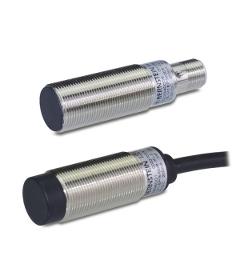
BERNSTEIN AG
Germany
— High switching frequencies up to 1000 kHz — Fully encapsulated versions to protection class IP67 — Sturdy metal enclosure — Temperature range: -25°C up to +70°C — Sensing distances: 5 mm up to 16 mm — 10 – 36 V DC or 20-250 V AC — PNP / NPN versions — NO / NC versions — Cable / connector versions — Function indicators — Short circuit-proof versions — Versions with IO-Link
Request for a quote
BERNSTEIN AG
Germany
— Versions for flush and non-flush mounting — AC and DC sensors available — High switching frequencies up to 300 kHz — Fully encapsulated versions to protection class IP67 — Sturdy metal and plastic enclosure — Temperature range: -25°C up to +70°C or -40°C up to +100°C — Sensing distances: 10 mm up to 15 mm — Cable / connector versions — 10 – 36 V DC or 20-250 V AC — PNP / NPN or AC versions — NO / NC versions — Function indicators — Short circuit-proof versions — Versions with IO-Link
Request for a quote
BERNSTEIN AG
Germany
— AC and DC version sensors — Sensing distance / sensitivity adjustable with side potentiometer — Sturdy metal or plastic enclosures — Metal versions with Teflon front cap — Temperature range: -25°C up to +70°C — Sensing distances: 2 mm up to 13,5 mm — Cable / connector versions — 10 – 36 V DC or 20 – 250 V AC — PNP / NPN or AC versions — NO / NC versions — Short circuit-proof PNP versions — M18 with function/operating voltage indicator
Request for a quote
BERNSTEIN AG
Germany
— AC and DC version sensors — M32 with programmable output, PNP / NPN and NO / NC — M32 with relay output and timer version — Potentiometer-adjustable sensing distance / sensitivity — Sturdy metal or plastic enclosures — Metal versions with Teflon front cap — Temperature range: -25°C up to +70°C — Sensing distances: 10 mm up to 30 mm — Cable / connector versions — 10 – 60 V DC or 20 – 250 V AC — PNP / NPN or AC versions, relay output — NO / NC versions — Short circuit-proof versions — Function and operating voltage indicators
Request for a quote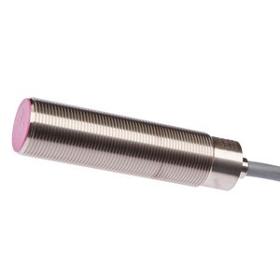
IPF ELECTRONIC GMBH
Germany
Inductive proximity switches are contact-free sensors. They detect all conductive metals, regardless of whether they move or not. The achievable sensing range of the devices depends on the object material and its dimensions. The vibration-resistant sensors can be approached laterally or frontally. Inductive proximity switches are used for presence detection (e.g. goods carriers), positioning (e.g. dampers), counting (e.g. nuts /bolts), speed detection (e.g. for cog wheels), on conveyor systems (e.g. hose feedings) or distance measurements (e.g. press-in checking) of metallic objects.
Request for a quote
IPF ELECTRONIC GMBH
Germany
Capacitive proximity switches are contact-free sensors. They detect metallic and non-metallic objects, regardless of whether they move or not. The achievable sensing range of the devices depends on the object material, its dimensions and the response sensitivity, which is set via a potentiometer. The vibration-resistant sensors can be approached laterally or frontally. Capacitive proximity switches are used for presence detection (e.g. sealing detection), positioning (e.g. PET bottles), counting (e.g. plastic caps), level detection (e.g. lubricant) or distance measurements (e.g. thickness measurement) of solid and liquid materials.
Request for a quoteDo you sell or make similar products?
Sign up to europages and have your products listed

IPF ELECTRONIC GMBH
Germany
Inductive proximity switches are contact-free sensors. They detect all conductive metals, regardless of whether they move or not. The achievable sensing range of the devices depends on the object material and its dimensions. The vibration-resistant sensors can be approached laterally or frontally. Inductive proximity switches are used for presence detection (e.g. goods carriers), positioning (e.g. dampers), counting (e.g. nuts /bolts), speed detection (e.g. for cog wheels), on conveyor systems (e.g. hose feedings) or distance measurements (e.g. press-in checking) of metallic objects.
Request for a quote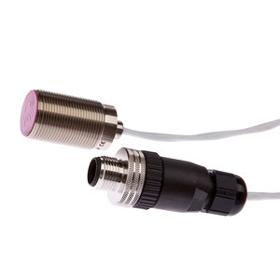
IPF ELECTRONIC GMBH
Germany
Inductive proximity switches are contact-free sensors. They detect all conductive metals, regardless of whether they move or not. The achievable sensing range of the devices depends on the object material and its dimensions. The vibration-resistant sensors can be approached laterally or frontally. Inductive proximity switches are used for presence detection (e.g. goods carriers), positioning (e.g. dampers), counting (e.g. nuts /bolts), speed detection (e.g. for cog wheels), on conveyor systems (e.g. hose feedings) or distance measurements (e.g. press-in checking) of metallic objects.
Request for a quoteResults for
Proximity sensor - Import exportNumber of results
20 ProductsCountries
Company type